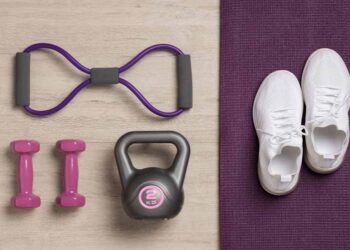In the quest for weight loss, cardio exercise emerges as a beacon of hope, a tried and tested method known for its efficiency in burning calories and boosting metabolism. However, amidst the sea of fitness advice, the crucial question remains: How much cardio do you really need to lose weight?
Cardiovascular exercise, or cardio, involves any activity that increases your heart rate, sustaining it for a prolonged period. It’s not the sole factor in weight loss but an indispensable part of a comprehensive approach to shedding unwanted pounds. Recognizing the importance of cardio is one thing, but determining the optimal amount for effective weight loss is another. Through this exploration, we aim to guide you to that sweet spot of cardio for weight loss, tailored to your personal goals and lifestyle.
Understanding Cardio for Weight Loss
What is Cardio?
At its core, cardio is any physical activity that raises your heart rate, keeping it elevated for an extended time. This can include:
- Running/jogging: A classic form of cardio that varies in intensity with speed and terrain.
- Swimming: Provides a full-body workout, excellent for those seeking low-impact options.
- Biking: Suitable for outdoor and indoor settings, biking is versatile in intensity.
- HIIT (High-intensity interval training): Alternates between short bursts of intense activity and periods of rest or low-intensity movement.
- Dancing: A fun, dynamic way to perform cardio that doesn’t feel like a workout.
The Role of Cardio in Weight Loss
Cardio exercises elevate the heart rate, leading to increased calorie burn, which is crucial for creating a calorie deficit necessary for weight loss. Beyond calorie burning, cardio enhances cardiovascular health, increases lung capacity, and can improve mental health by reducing stress.
A personal anecdote that highlights the importance of cardio came from a friend who started incorporating running into her routine. Initially struggling with weight loss, she noticed significant improvements in her physical and mental well-being once she found joy in running. This transformation wasn’t just about the calories burned but about how running became a cherished part of her day, showcasing the multifaceted benefits of cardio.
How Much Cardio is Needed?
Health Organization Recommendations
The American Heart Association’s recommendation of 150 minutes of moderate-intensity or 75 minutes of vigorous-intensity cardio each week is a guideline rooted in extensive research. These recommendations aim to promote overall cardiovascular health, which is essential for a healthy lifestyle and effective weight loss. However, it’s important to break down what moderate and vigorous intensities mean for different people:
- Moderate-intensity activities might include brisk walking, light cycling, or water aerobics. These are activities where you can talk but not sing during the exercise.
- Vigorous-intensity activities are more strenuous and increase your heart rate significantly. Running, swimming laps, competitive cycling, or participating in high-intensity interval training (HIIT) classes are examples.
Understanding the distinction between these two can help individuals better plan their workouts to meet both health and weight loss goals.
Personalizing Cardio Based on Individual Factors
Current Fitness Level
For those new to regular physical activity, it’s critical to start slowly to prevent injury and build a habit. Beginners might start with 10-15 minutes of moderate-intensity cardio and gradually increase duration and intensity. It’s not uncommon for individuals to underestimate or overestimate their fitness levels, so starting conservatively can provide a safer gauge of capability.
Weight Loss Goals
The specificity of one’s weight loss goals can significantly impact the amount of cardio required. For example, someone aiming to lose a significant amount of weight in preparation for a major event (like a wedding or marathon) might need to engage in more intensive and frequent cardio sessions compared to someone looking to slowly and steadily lose weight for general health benefits.
Diet and Lifestyle Adjustments
The effectiveness of cardio goes hand in hand with dietary habits. A calorie-restricted but nutrient-dense diet can enhance the results of cardio exercises. Moreover, lifestyle factors such as stress levels and sleep patterns can also affect how your body responds to exercise. High stress and poor sleep can lead to increased cortisol levels, making it harder to lose weight even with significant cardio effort.
Factors Affecting Cardio Needs
Starting from Your Current Fitness Level
Your journey begins with an honest assessment of your current fitness level. Someone who has never jogged before might find a 30-minute run overwhelming and potentially discouraging. It’s crucial to start slowly, perhaps with brisk walking, gradually increasing the intensity and duration as your fitness improves.
Adjusting Cardio Based on Weight Loss Goals
Your weight loss ambitions play a pivotal role in determining your cardio regimen. Aiming to lose a significant amount of weight might necessitate more rigorous or prolonged cardio sessions compared to someone seeking to maintain their current weight.
The Critical Role of Diet
No amount of cardio can compensate for a poor diet. Combining cardio with a balanced, nutritious diet enhances the effectiveness of your workouts and supports overall health. My own experience underscores this; despite regular cardio, it was only after refining my diet that I saw the results I desired.
Making Cardio Work for You
Finding the right balance and type of cardio can make all the difference in your weight loss journey. Here are ways to ensure cardio becomes a sustainable and enjoyable part of your routine:
Combining Cardio with Strength Training
While cardio helps you burn calories, integrating strength training into your regimen can boost your metabolism and help you build muscle. Muscle tissue burns more calories at rest compared to fat tissue, so increasing your muscle mass can help you burn more calories overall, even on non-workout days. For instance, after adding two days of strength training to my weekly routine, I not only felt stronger but also noticed an acceleration in weight loss.
Finding Enjoyable Cardio Activities
The key to long-term success with any exercise plan, especially one focused on weight loss, is enjoyment. If you dread your workouts, it’s going to be challenging to stick with them. Experiment with different forms of cardio to find what you enjoy. Whether it’s dance classes, hiking, or team sports, the best cardio workout for weight loss is the one you’ll consistently do.
Gradual Increases for Lasting Success
Start with manageable workouts and gradually increase the intensity and duration. This approach helps prevent burnout and reduces the risk of injury. A gradual increase also allows your body to adjust to new demands, making your workouts more effective over time. For example, adding just 5 minutes to your cardio session every two weeks can significantly enhance your endurance and calorie-burning capacity without overwhelming you.
Tips for Success
Achieving your weight loss goals through cardio requires more than just knowing how much to do. Here are some strategies to keep you on track:
Set Realistic Goals
Setting achievable goals helps keep motivation high and provides a sense of accomplishment. Instead of aiming to lose a large amount of weight quickly, set smaller, incremental goals. Celebrate these milestones to encourage progress.
Track Your Progress
Monitoring your workouts and physical changes can motivate you and provide insight into what’s working. Use apps, a journal, or a fitness tracker to keep track of your cardio sessions, including duration, frequency, and intensity. Note changes in your body measurements, weight, and how you feel to adjust your plan as needed.
Consult a Fitness Professional
Personalized advice from a certified fitness trainer can be invaluable, especially when starting out or when progress plateaus. They can help tailor your cardio plan to your specific needs, taking into account your fitness level, preferences, and goals.
Listen to Your Body
Rest and recovery are as important as the workouts themselves. Overtraining can lead to injury and burnout, so it’s crucial to listen to your body. If you’re feeling overly fatigued, take a rest day. Remember, weight loss is a marathon, not a sprint.
Conclusion
Cardio is a cornerstone of effective weight loss, offering numerous benefits beyond calorie burning. However, the most effective cardio plan is one that considers your personal goals, preferences, and lifestyle. By starting with realistic expectations, finding activities you enjoy, and gradually increasing intensity, you can make cardio a sustainable part of your weight loss journey. Remember, consistency is key. Alongside a balanced diet and sufficient rest, regular cardio can help you achieve and maintain your weight loss goals.
Call to Action
Now that you understand the importance of cardio in weight loss and how to effectively incorporate it into your routine, it’s time to take action. Begin by evaluating your current fitness level and setting achievable goals. Experiment with different cardio activities to find what you enjoy most and start building a workout plan that excites you. Remember, every step forward is a step closer to your weight loss goals. If you need help getting started or optimizing your routine, don’t hesitate to seek resources or support from fitness communities or professionals. Your journey to a healthier, fitter you begins with that first step. Let’s make it count!














